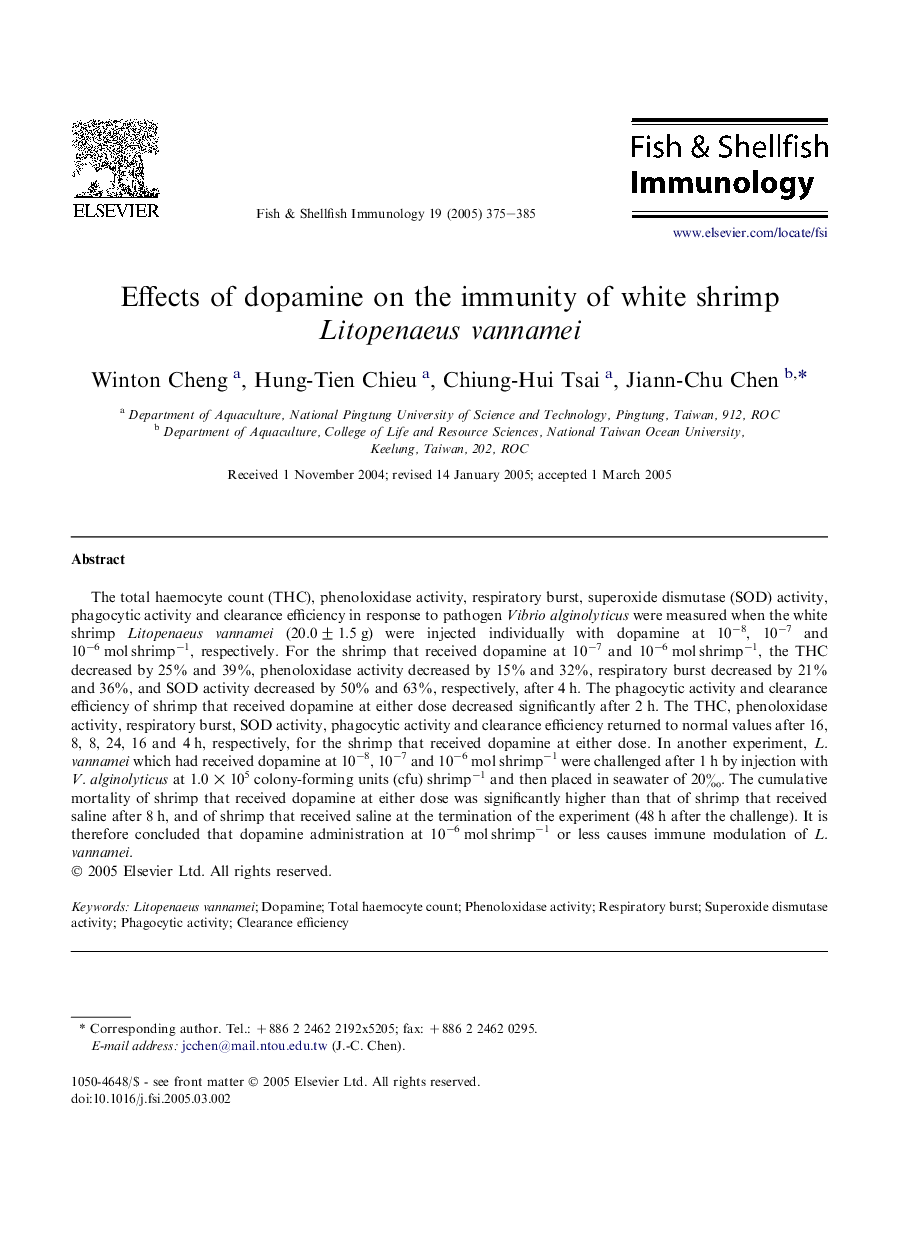| Article ID | Journal | Published Year | Pages | File Type |
|---|---|---|---|---|
| 8978746 | Fish & Shellfish Immunology | 2005 | 11 Pages |
Abstract
The total haemocyte count (THC), phenoloxidase activity, respiratory burst, superoxide dismutase (SOD) activity, phagocytic activity and clearance efficiency in response to pathogen Vibrio alginolyticus were measured when the white shrimp Litopenaeus vannamei (20.0 ± 1.5 g) were injected individually with dopamine at 10â8, 10â7 and 10â6 mol shrimpâ1, respectively. For the shrimp that received dopamine at 10â7 and 10â6 mol shrimpâ1, the THC decreased by 25% and 39%, phenoloxidase activity decreased by 15% and 32%, respiratory burst decreased by 21% and 36%, and SOD activity decreased by 50% and 63%, respectively, after 4 h. The phagocytic activity and clearance efficiency of shrimp that received dopamine at either dose decreased significantly after 2 h. The THC, phenoloxidase activity, respiratory burst, SOD activity, phagocytic activity and clearance efficiency returned to normal values after 16, 8, 8, 24, 16 and 4 h, respectively, for the shrimp that received dopamine at either dose. In another experiment, L. vannamei which had received dopamine at 10â8, 10â7 and 10â6 mol shrimpâ1 were challenged after 1 h by injection with V. alginolyticus at 1.0 Ã 105 colony-forming units (cfu) shrimpâ1 and then placed in seawater of 20â°. The cumulative mortality of shrimp that received dopamine at either dose was significantly higher than that of shrimp that received saline after 8 h, and of shrimp that received saline at the termination of the experiment (48 h after the challenge). It is therefore concluded that dopamine administration at 10â6 mol shrimpâ1 or less causes immune modulation of L. vannamei.
Keywords
Related Topics
Life Sciences
Agricultural and Biological Sciences
Aquatic Science
Authors
Winton Cheng, Hung-Tien Chieu, Chiung-Hui Tsai, Jiann-Chu Chen,
